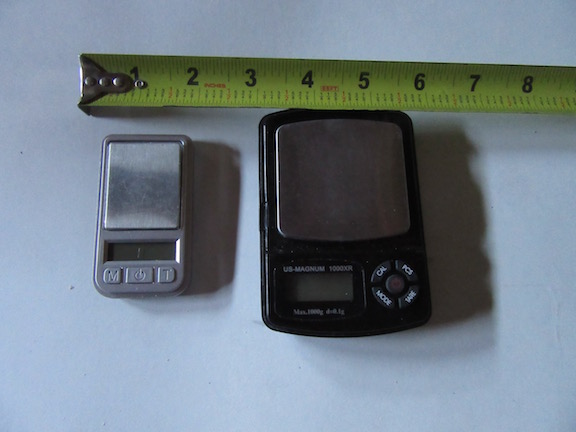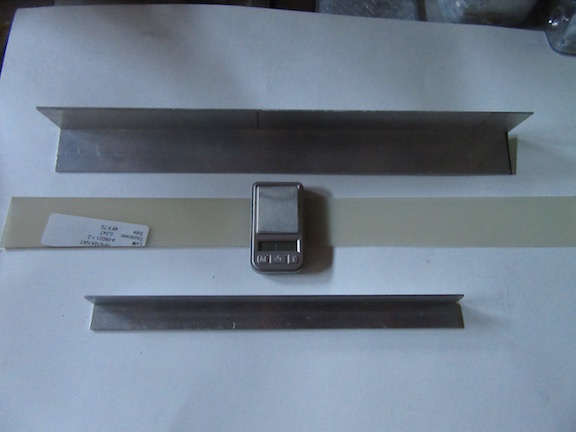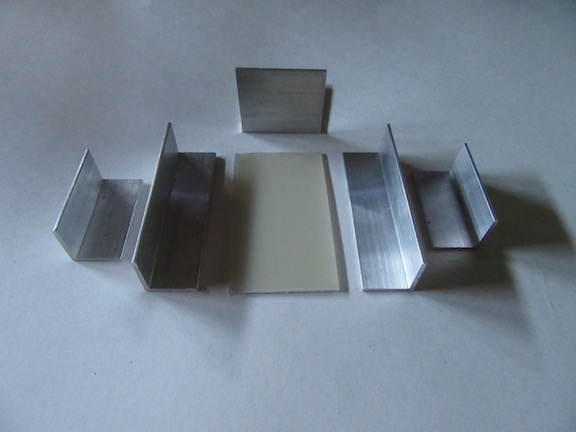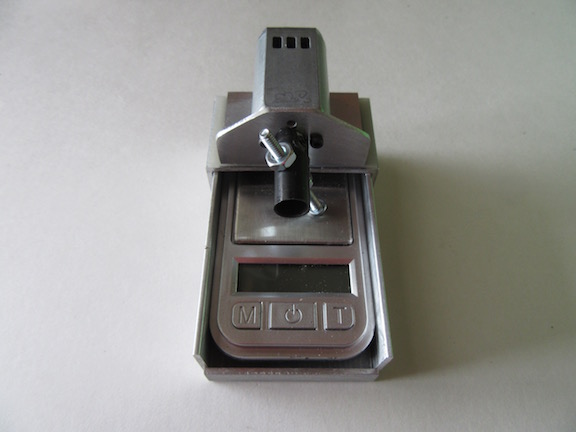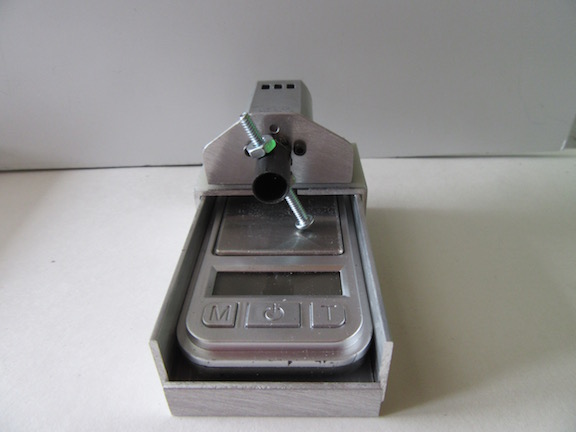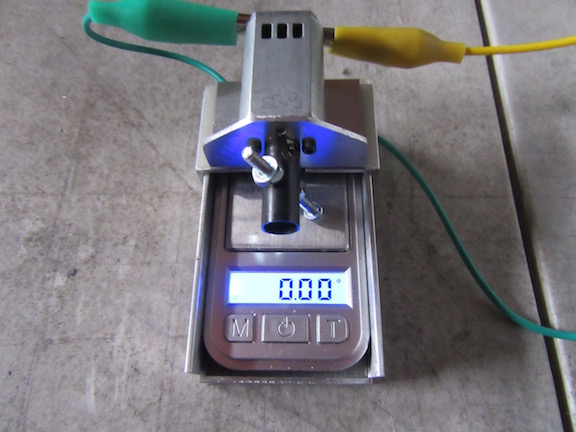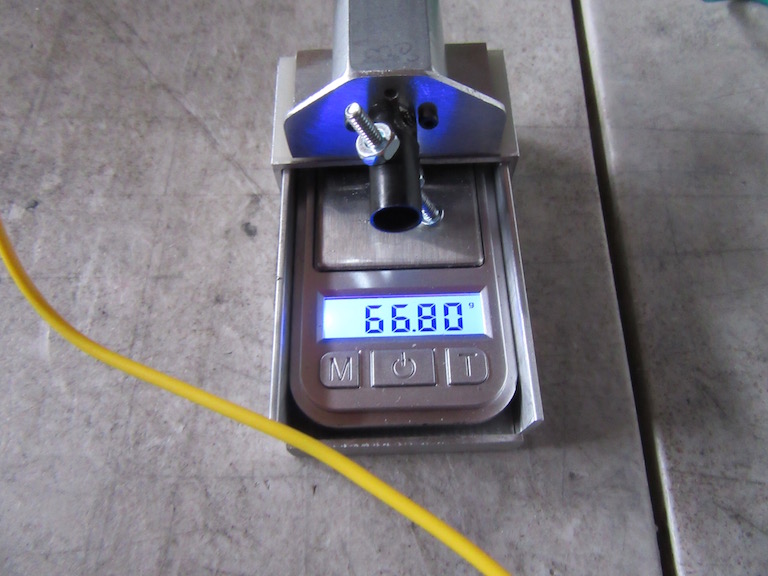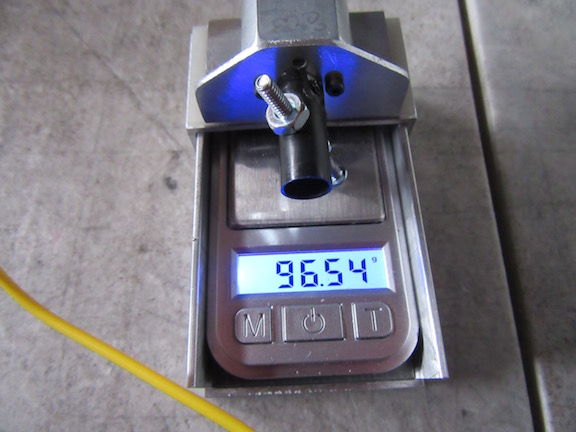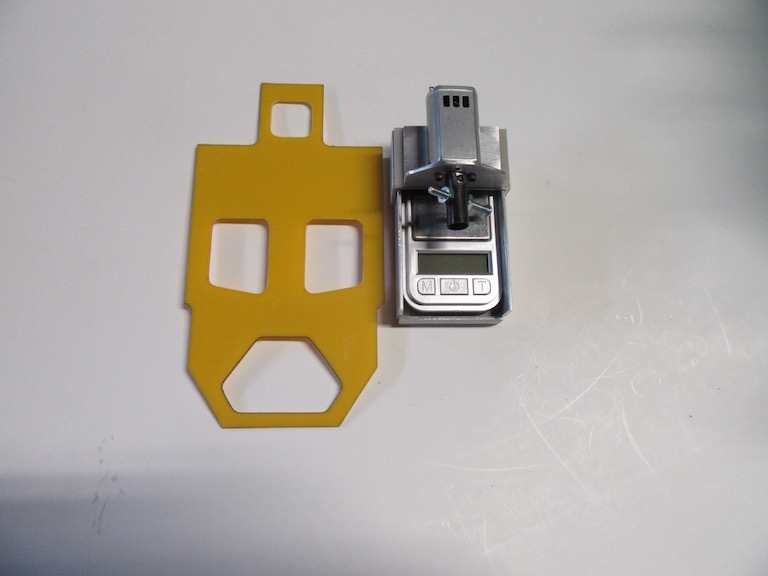Greetings everyone!
Hope everyone is safe and working on your slot car stuff!
In late 2018 I built a small motor dyno for myself to get an idea of the power output of my motors.
Here's the thread link for those who might be interested in my first dyno build: http://slotblog.net/...409-motor-dyno/
Here's a photo from that thread:
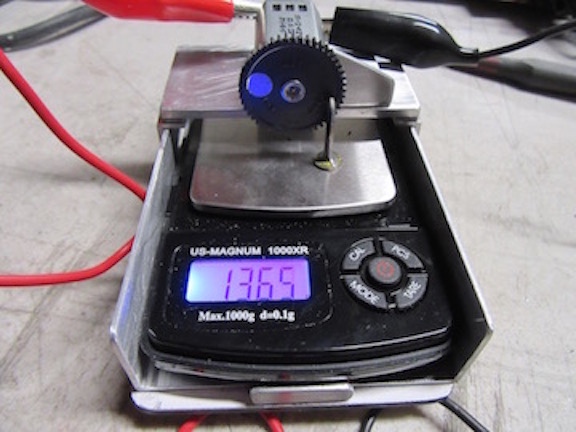
I no longer have that dyno, and while organizing my slot car "paraphernalia", I came across a very small weigh scale and decided upon a new project.
Thus, came the idea of a more compact size "mini motor dyno" - just for fun!
Here's the comparison of the weigh scales, to show the vast difference in size.
Here are the pieces I'm working with; aluminum angle and G10 composite sheet scrap.
Pieces cut to specs.
As part of the fulcrum mechanism, I employed a wheel hub for a 2mm axle and #4-40 threaded screw and nuts.
Weigh scale turned on - - power supply wires hooked up but no power turned on yet. Zero'd out the scale.
I dialed up my variable power supply to 2.5 volts and then 3 volts.
The gram weight reading was rapidly changing, showing different weights so it was fortunate that my camera was able to catch a clear reading.
Since the weigh scale won't stop at a certain reading, I just observed whatever number that I was able to read on the screen and wrote that down.
Then I decided to use my other power supply that has a preset voltage selection so I set it at 3 volts.
This worked out better for me since I did not have to dial up the voltage, I could just turn on the power supply and take the reading.
I took 3 gram weight readings, after a couple of seconds of power I wrote down the number I was able to see, then shut off the power.
I took the average and multiplied the 3 volts by 4, to come up with an approximate 12V torque reading.
I'm cognizant this is not that accurate of a device and a little finicky, but for me, I find enjoyment with seeing what the different type of motors I have, put out - torque wise.
Just another "engineering exercise" for me that I wanted to share.
To give you an idea on how compact the mini motor dyno is, here's a picture of it juxtaposed next to my 1/24 composite chassis.
I had fun fabricating it - thank you for looking!
Ernie




